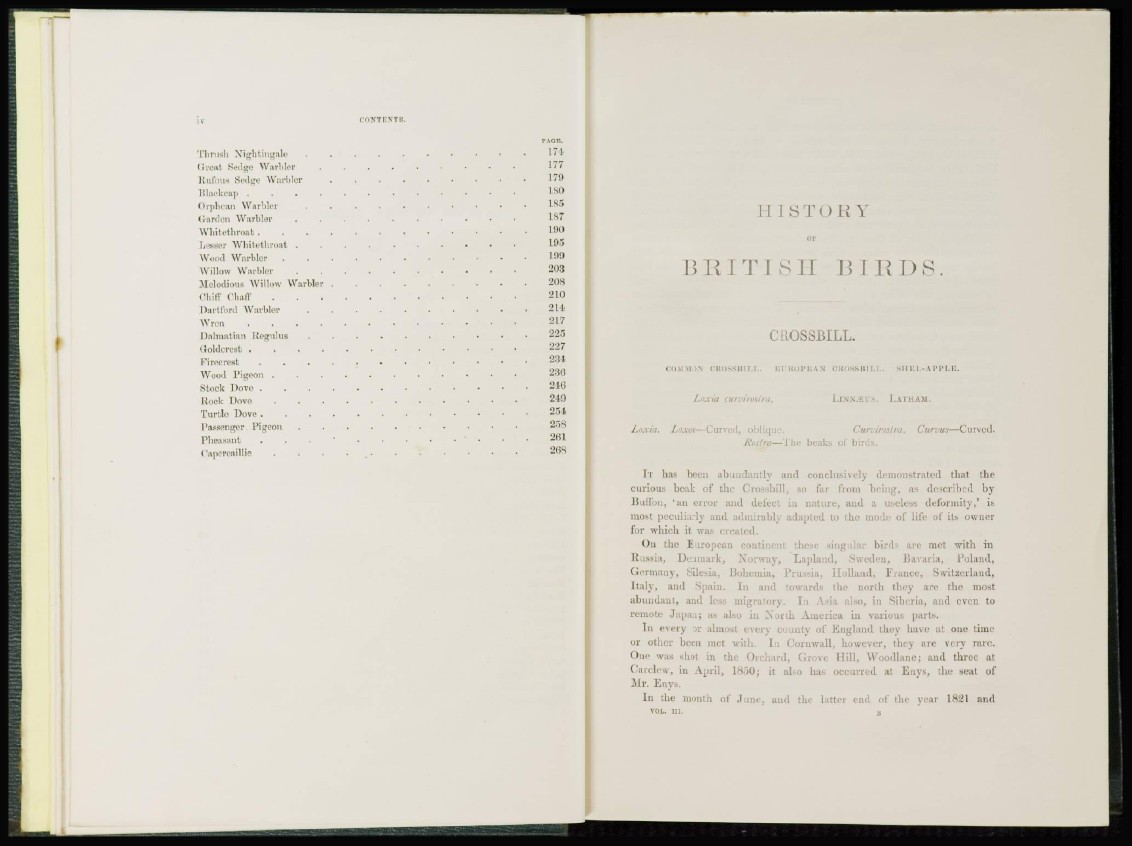
iv COVMRRA
Thrush Nightingale 174
(Sreat Sedge Warbler 177
KUFMIH Sedge Warl.ler 179
Blackcap 1S?
Orphean Warbler 185
Garden Warbler 187
Whitethroat 190
Lesser Whitethroat 195
Wood Wnrblor 199
Willow Warbler 203
Melodious Willow Warbler 208
Chiff Chaff • • 2 10
Dart lord Warbler 214
Wren 217
Dalmatian Retrain! 225
, . . "•'7
(Jolacrest
Firecrest
Wood Pigeon 236
Stock Dove 246
Rook Dovo 249
Turtlo Dove 2^4
Passenger Pigeon . . • • • • • • • • - ' '
Pheasant . • . . . 261
Capcrcaillie . 268
II [STO RY
OP
B R I T I S H B I R D S.
C R O S S B I L L .
COMMON CROSSBILL. EUROPEAN CROSSBILL. SHEL- A P P L B.
Loxia curvtrvs/ra, Li n n a e u s . La t h a m.
Loxia, Loxos—Curved, oblique. Curvirostra. Curvus—Curved.
Rostra—The beaks of birds.
I t has beeu abundantly and conclusively demonstrated that the
curious beak of the Crossbill, so far from being, as described by
Buffon, ' a n error and defect in nature, and a useless deformity,' is
most peculiarly and admirably adapted to the mode of life of its owner
for which it was created.
On the European continent these singular birds are met with in
Russia, Denmark, Norway, Lapland, Sweden, Bavaria, Poland,
Germany, Silesia, Bohemia, Prussia, Holland, France, Switzerland,
I t a l y , and Spain. In and towards the uorth they are the most
abundant, and less migratory. In Asia also, in Siberia, and even to
remote J a p a n ; as also in N o r t h America in various parts.
I n every or almost every county of E n g l a n d they have at one time
or other been met with. In Cornwall, however, they are very rare.
One was shot in the Orchard, Grove Hill, W o o d l a n e ; and three at
Car clew, in April, 1850; it also has occurred at Bays, the seat of
Mr. Enys.
I n the month of J u n e , and the latter end of the year 1821 and
VOL. III. B